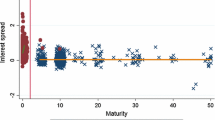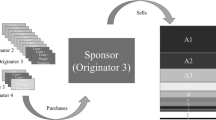Abstract
In recent years, the conforming loan limit has risen rapidly (62 percent between 1985 and 1989 versus a 10 percent rise in the price of a constant-quality new house) and has assumed significant importance to homebuyers and portfolio lenders. Fannie Mae and Freddie Mac have become the price setters for comforming FRMs, and the yield being set appears to be 30 basis points below what it would otherwise be. The lower yield raises the old issue of overinvestment in housing, but its most important effect is on thrifts who now earn 30 basis points less on FRM investments under the conforming limit and who have difficulty originating ARMs. Moreover, given other thrift problems, taxpayers will apparently end up directly funding the interest income lost owing to low yields on conforming FRMs.
In this article we calculate the impact on thrift interest income of two redefinitions of conforming loans: making all refinancings nonconforming and lowering the loand limit to the loan ceiling for FHA/VA loans (which was, in fact, the conforming limit prior to 1975). Each of these redefinitions makes sense from a public policy perspective. Thrifts would have earned nearly $700 million more in 1987 had both redefinitions been in place at the start of 1986. This would have amounted to a 23 percent increase in the industry net operating income (income excluding profits or losses from the sale of assets) and a corresponding increase in return to equity. By the early 1990s, the income gain from these changes, had they been put in place in early 1986, would likely be over a billion dollars—certainly a noticeable saving for taxpayers.
Similar content being viewed by others
References
Hendershott, Patric H. “The Future of Thrifts as Mortgage Portfolio Lenders.”The Future of the Thrift Industry. Proceedings of the Fourteenth Annual Conference, Federal Home Loan Bank of San Francisco, 1989.
Hendershott, Patric H. and Shilling, James D. “The Impact of the Agencies on Conventional Fixed-Rate Mortgage Yields.”The Journal of Real Estate Finance and Economics (1989).
Hendershott, Patric H. and Van Order, Robert. “Integration of Mortgage and Capital Markets and the Accumulation of Residential Capital.”Regional Science and Urban Economics (1989).
Kane, Edward.The Gathering Crisis in Federal Deposit Insurance. Cambridge, MA: MIT Press, 1985.
Lea, Michael J. “Housing and the Capital Markets.” MIT Center for Real Estate Development, April 1988.
Lea, Michael J. “Raising the Roof: the Loan Limit Controversy.”Secondary Mortgage Markets (Winter 1986/87), 26–29.
Meltzer, Allan H. “Credit Availability and Economic Decisions: Some Evidence from the Mortgage and Housing Markets.”Journal of Finance (June 1974), 763–777.
Woodward, Susan E. “Policy Issues in the Privatization of FNMA and FHLMC.”Expanded Competitive Markets and the Thrift Industry. Proceedings of the Thirteenth Annual Conference, Federal Home Loan Bank of San Francisco, 1988, 169–184.
Author information
Authors and Affiliations
Rights and permissions
About this article
Cite this article
Hendershortt, P.H., Shilling, J.D. Reforming conforming loan limits: The impact on thrift earnings and taxpayer outlays. J Finan Serv Res 3, 311–331 (1989). https://doi.org/10.1007/BF00114048
Issue Date:
DOI: https://doi.org/10.1007/BF00114048




